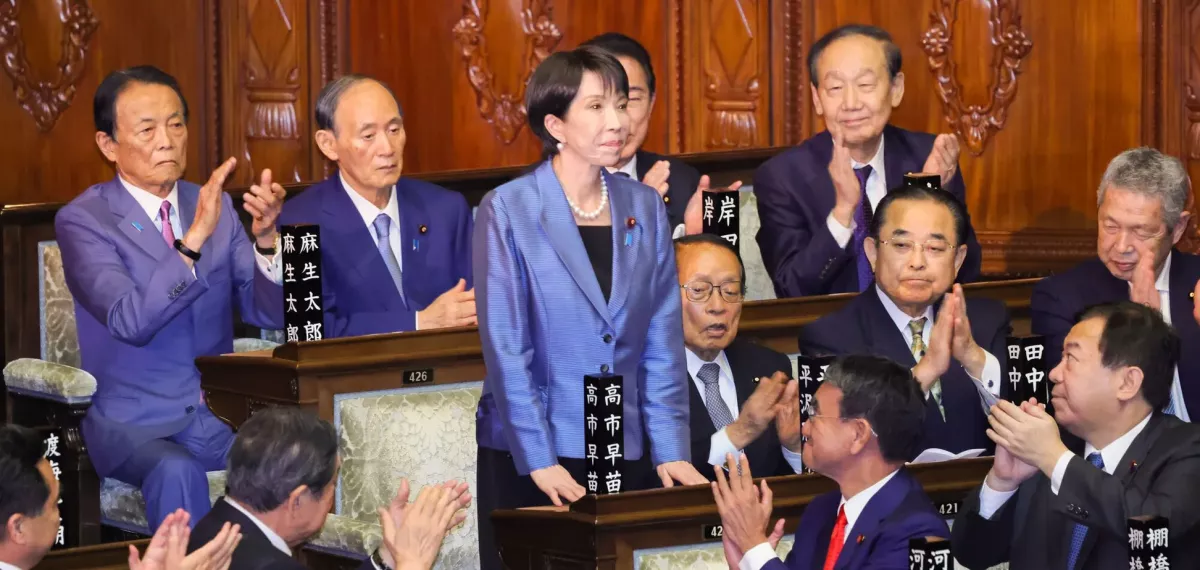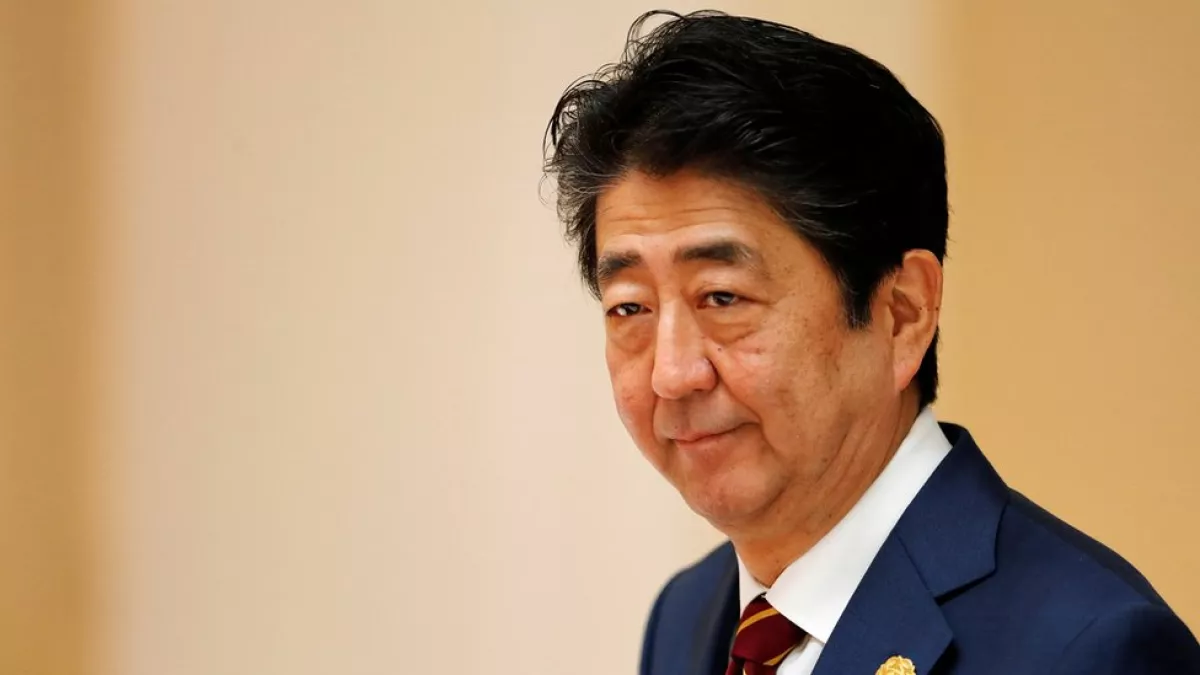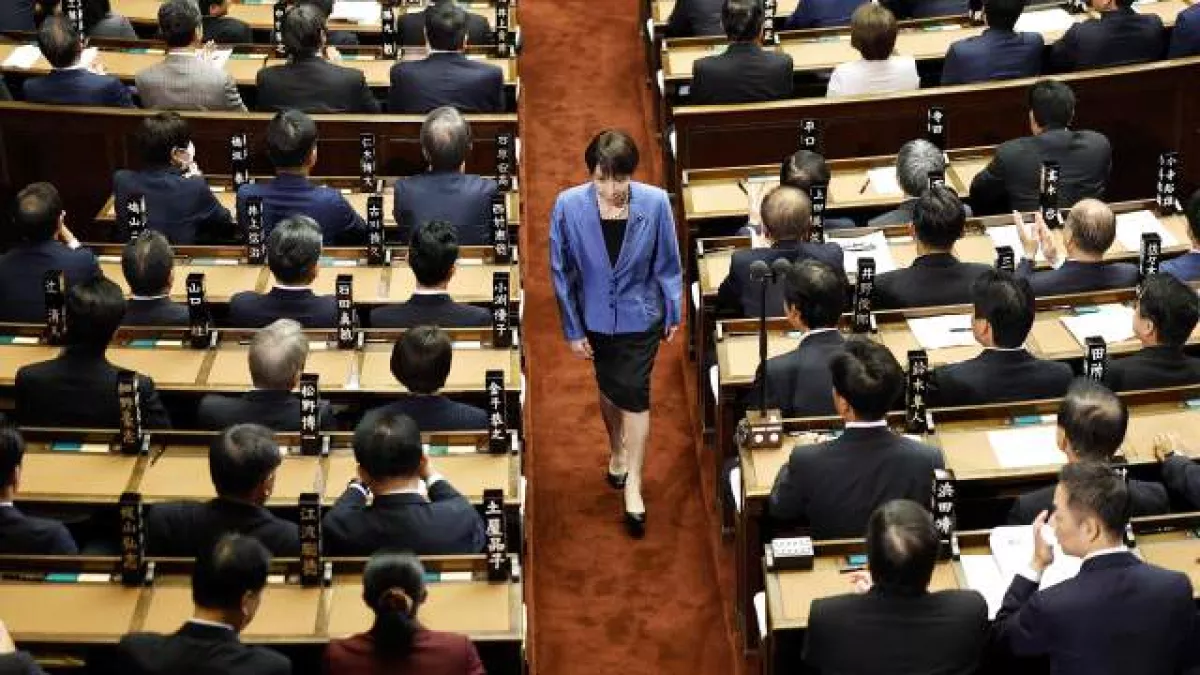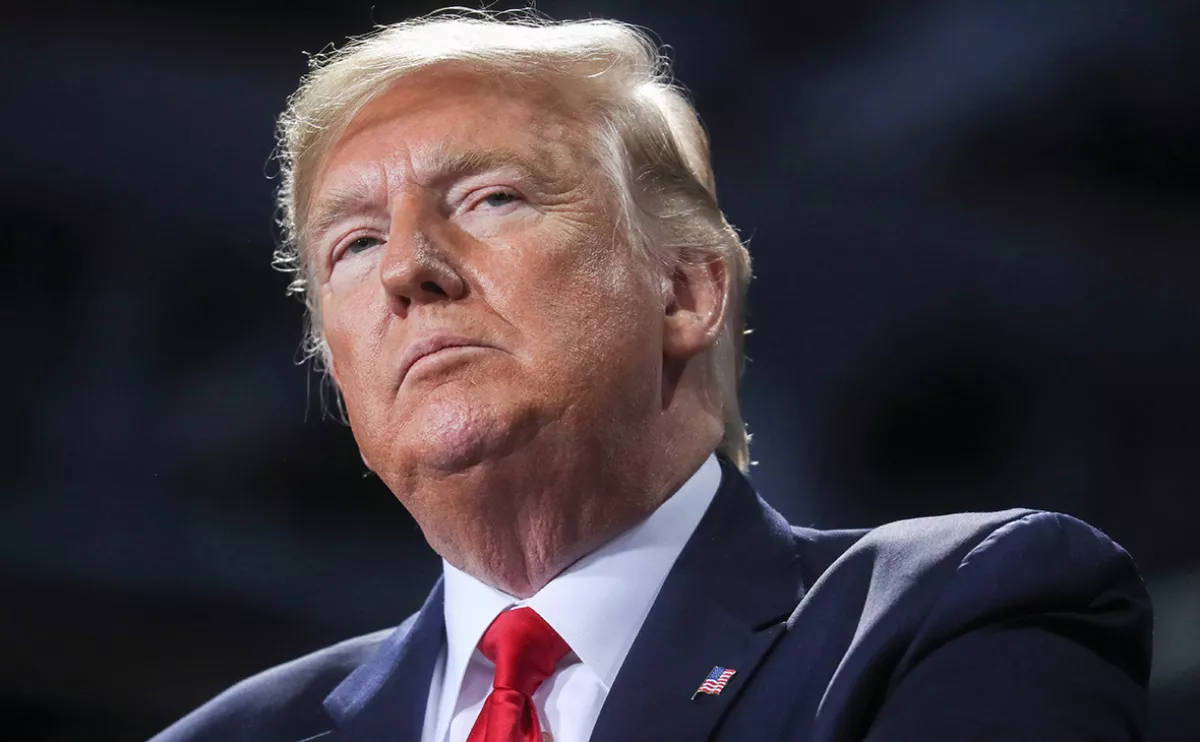For the first time in history, Japan will be led by a woman. The Japanese parliament has elected Sanae Takaichi, leader of the Liberal Democratic Party, as Prime Minister.
Conservative feminisation
On the evening of October 21, the inauguration of the new head of the Cabinet of Ministers, 64-year-old Sanae Takaichi, took place. For the first time in the history of the Japanese Empire, Emperor Naruhito handed over executive power in the Land of the Rising Sun to a woman. All 103 previous prime ministers of Japan had been men. Under the Constitution, Takaichi now also serves as the Commander-in-Chief of Japan’s Self-Defence Forces. The appointment of a woman as head of the Japanese government has caused a certain sensation in the global media.

The Land of the Rising Sun still maintains an extremely conservative approach to gender equality. Only 14.8% of managerial positions are held by women, placing Japan second in the world for gender inequality (after India, with 14.6%).
Sanae Takaichi, now the leader of a traditionalist party, was passionate about heavy metal music in her student years, playing drums in an amateur rock band and riding a Kawasaki motorcycle. Today, she is a staunch conservative but remains a fan of Iron Maiden and Deep Purple. She graduated from Kobe University and completed an internship in the United States at the office of former Democratic Congresswoman and feminist Patricia Schroeder. She first won a seat in the Japanese parliament in 1993.
However, as a female lawmaker, she faced numerous challenges dictated by Japanese societal norms for women. While male lawmakers conducted business in saunas and clubs, such formats were taboo for women. Meetings with male politicians one-on-one were also seen as problematic by traditional moral standards, and female legislators were even restricted in their activities after 5 p.m.

Her political mentor was former Prime Minister Shinzo Abe, in whose cabinet Takaichi repeatedly held ministerial posts.
She divorced her husband, who was also a member of the LDP, due to political disagreements, and later remarried him. In their second marriage, her husband took her surname—a highly unusual occurrence in traditionalist Japan.
However, the current revamped structure of the Japanese government has several serious motivations beyond the pursuit of the oft-cited gender balance, including issues related to the economic crisis. Japan’s economy has been stagnant for many years. In 2024, GDP growth was only 0.1%. At the same time, there was significant price growth, with inflation reaching 4% at the beginning of 2025, which hit ordinary Japanese citizens hard. Meanwhile, the country’s external debt reached a staggering $8.7 trillion in 2024, or 236.7% of GDP, placing Japan first in the world by this measure.
As a result, the Liberal Democratic Party (LDP) suffered a defeat in the October 2024 elections, achieving the second-worst result in its history — 191 out of 465 seats. For the first time since 2009, the LDP lost its parliamentary majority and was forced to form a minority government. At that time, Prime Minister Shigeru Ishiba called for new elections, the results of which in July 2025 proved even more disappointing for the ruling party. The LDP secured only 125 seats (21%) — the lowest result in its entire history.
Voter dissatisfaction with the LDP was also fueled by high-profile corruption scandals. Responsibility for these defeats was placed on the then-party leader and Prime Minister Shigeru Ishiba. In 2024, Sanae Takaichi lost the LDP presidential election to Ishiba, but on October 4 of this year, she was elected party leader.

Evidently, the selection of a female leader for the LDP was no coincidence. The latest electoral campaign brought an unprecedented number of women deputies to the Japanese Parliament. Now, the ruling party can also capitalise on this trend in voter sentiment by “feminising” its image.
As a candidate for Prime Minister, Sanae Takaichi promised to form a “Scandinavian-style government,” where women could make up half or more of the ministers. However, in the new Cabinet, aside from Takaichi herself, there will be only two other women — Satsuki Katayama, Minister of Finance, and Kimi Onoda, Minister of Economic Security.
As a conservative, Sanae Takaichi opposes granting women the right to ascend the Japanese imperial throne and is against same-sex marriages, but she does not support discrimination based on sexual orientation or gender identity. At the same time, Takaichi believes in the necessity of reviving Shinto religious cults.
Conservatives and innovation
Expectations for the new Prime Minister focus primarily on immediate measures to revive the economy, including stimulating consumer demand.
The stock markets have already reacted positively to her election. Takaichi is largely a follower of former Prime Minister Abe’s economic policies, which aimed to stimulate a stagnant economy through inflation. However, this approach is unlikely to help Takaichi’s government — Japan’s economy is not experiencing deflation, as it did under Abe, but is already facing significant inflation. To revive the economy, strong measures such as fiscal stimulus are being considered.
Takaichi has also promised large-scale state investments in strategic sectors of the economy (“crisis management”), including AI, semiconductors, nuclear fusion, biotechnology, and the defence industry.
Within her party, the LDP, Sanae Takaichi occupies far-right positions; she is also a member of the conservative nationalist organisation Nippon Kaigi. Takaichi intends to pursue a corresponding agenda on immigration and defence.
Japan is a highly insular country, and migration is a concern for many. At the same time, the nation faces declining birth rates and an ageing population. Employers often see the solution to labour shortages and the demographic crisis in importing “guest workers” from China, Vietnam, South Korea, the Philippines, Brazil, Nepal, Indonesia, Myanmar, and several other countries.
This issue has also become a tool for exploitation by the far-right in Japan, much like their “counterparts” in Europe. The ultranationalist party Sanseitō (“Party for Self-Reliant Action”), which opposes migrants, foreign businesses, and the liberal establishment, has been rapidly gaining support. Previously holding just one seat in Parliament, Sanseitō won 15 seats in the most recent July elections.

The far-right reacts angrily not only to guest workers but even to foreign tourists, whom they claim are “driving up prices.” Some analysts believe that Sanseitō has drawn a significant portion of the conservative electorate away from the LDP. Against this backdrop, the new Prime Minister has also promised measures to restrict migration and to deport economic refugees.
The new government also plans to increase military spending and expand defence cooperation with the United States and other American allies in the region. Takaichi has previously been known to visit the Yasukuni Shrine, which is regarded in China, Korea, and several other countries as a symbol of militarism. According to media reports, she tended to downplay the Japanese Imperial Army’s war crimes during World War II and considered that, after the Manchurian Incident in China in 1931, the Japanese army was waging a war “for security.”
The new Prime Minister also considers it necessary to remove from the Constitution the article that prohibits Japan from having a military (currently known as the Self-Defence Forces) and supports the creation of a Japanese intelligence service. In the past, she has spoken about the possibility of stationing U.S. nuclear weapons on the Japanese islands in the event of an emergency.
Notably, Takaichi’s positions, as well as the LDP’s standing in Parliament, remain quite precarious. She was confirmed as Prime Minister with a narrow margin — 237 out of 465 votes in the lower house of Parliament.

The appointment of the LDP leader as head of government was only possible with the support of the right-leaning libertarian Japan Innovation Party (“Ishin”). Together, these two parties fall two votes short of a majority in the upper legislative chamber. This means that the minority ruling coalition of the LDP and Ishin will depend on situational support from the opposition. In many cases, this electoral “ally” could be the far-right Sanseitō party. Its leader, Sohei Kamiya, has already stated that Sanseitō’s support for the new Prime Minister is possible, provided her policies follow the “national interest.”
It is also expected that the new liberal allies from Ishin will limit the LDP’s attempts to stimulate the economy through government spending, demanding cuts to the budget and its social programmes. Ishin has already called for a suspension of the 10% consumption tax on food. Previously, such neoliberal tendencies could be balanced by their long-standing partners — the socio-conservative Komeito party. However, Komeito, which had been an LDP coalition partner for a quarter of a century, has now refused to join the alliance due to disagreements with the new government.
Who will make Japan “great again”?
The Takaichi Cabinet will face no less complex challenges on the foreign front. Sanae Takaichi is considered to hold one of the toughest positions within the ruling LDP regarding China. Yet, despite being called a “conservative nationalist,” Takaichi has demonstrated a degree of flexibility and diplomacy. For instance, this autumn she skipped the festival at the Yasukuni military shrine, likely to avoid provoking China.
Beyond China, the legacy of World War II and the aggression of the Imperial Japanese Army continues to cast a shadow over Japan’s relations with South Korea. In the near future, the new Prime Minister is expected to visit the Republic of Korea for the upcoming APEC summit. Previously, Takaichi has promised to take a firm stance towards South Korea, with which Japan has economic and migration disputes.

Japan’s first major foreign policy event is expected within the coming week. U.S. President Donald Trump will arrive in Tokyo for a two-day visit. Notably, the LDP has recently been clearly modelling itself on the current U.S. president’s election campaign, using slogans such as “Make Japan Strong and Prosperous.”
However, there are nuances in the Japan–U.S. relationship. In Tokyo, Trump’s intentions to impose a 25% tariff on Japanese goods and to increase contributions for the upkeep of U.S. military bases caused serious discontent. In the end, a presidential decree issued in September reduced the tariffs to 15%. At one point, Japan, China, and South Korea even formed a sort of coalition to counter the proposed American tariff increases.
All these complex issues — as well as the direction of joint policy toward China — will likely be on the agenda for the new Japanese Prime Minister during the upcoming meeting with the U.S. president. Meanwhile, both the economic and military-political situation in the region remain in need of serious stabilisation.


AloJapan.com